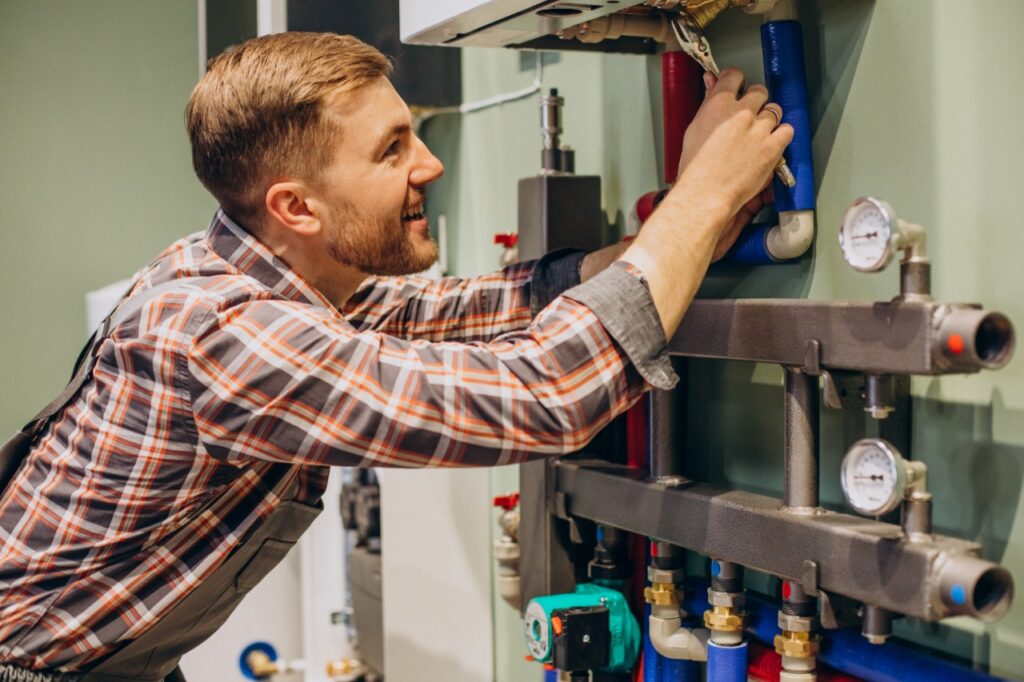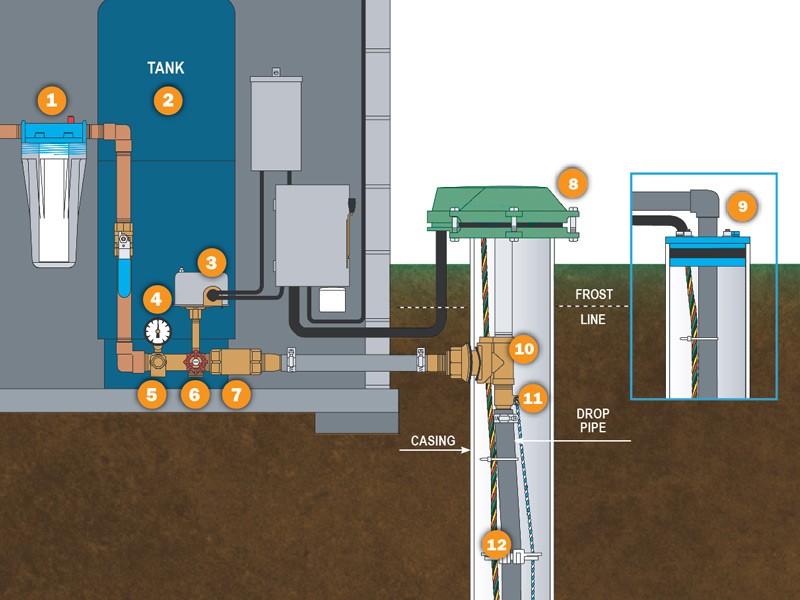Exploring The Structure of Your Home's Plumbing System
Exploring The Structure of Your Home's Plumbing System
Blog Article
What're your ideas on Understanding Your Home's Plumbing Anatomy?

Comprehending how your home's plumbing system functions is essential for every homeowner. From providing tidy water for drinking, food preparation, and bathing to safely getting rid of wastewater, a well-kept pipes system is vital for your family members's health and convenience. In this comprehensive overview, we'll explore the complex network that comprises your home's pipes and offer ideas on upkeep, upgrades, and handling typical issues.
Intro
Your home's pipes system is greater than simply a network of pipelines; it's a complicated system that guarantees you have access to tidy water and efficient wastewater elimination. Recognizing its parts and exactly how they collaborate can assist you stop expensive repair services and guarantee everything runs smoothly.
Fundamental Components of a Pipes System
Pipelines and Tubing
At the heart of your pipes system are the pipes and tubing that lug water throughout your home. These can be made from numerous products such as copper, PVC, or PEX, each with its advantages in regards to durability and cost-effectiveness.
Fixtures: Sinks, Toilets, Showers, etc.
Fixtures like sinks, bathrooms, showers, and bathtubs are where water is made use of in your house. Comprehending how these components attach to the plumbing system aids in diagnosing problems and preparing upgrades.
Valves and Shut-off Factors
Shutoffs regulate the flow of water in your pipes system. Shut-off valves are important during emergencies or when you need to make repair work, allowing you to isolate parts of the system without interfering with water flow to the entire home.
Water Supply System
Main Water Line
The main water line attaches your home to the metropolitan water system or a personal well. It's where water enters your home and is distributed to various fixtures.
Water Meter and Stress Regulator
The water meter measures your water use, while a stress regulator makes sure that water moves at a safe stress throughout your home's pipes system, preventing damage to pipes and fixtures.
Cold Water vs. Warm water Lines
Comprehending the distinction between cold water lines, which provide water directly from the major, and hot water lines, which bring heated water from the water heater, aids in fixing and planning for upgrades.
Drain System
Drain Pipeline and Traps
Drain pipes lug wastewater away from sinks, showers, and commodes to the sewage system or sewage-disposal tank. Catches avoid sewer gases from entering your home and additionally trap particles that might cause clogs.
Air flow Pipes
Air flow pipelines permit air right into the drain system, stopping suction that could slow water drainage and create catches to empty. Proper air flow is vital for keeping the stability of your plumbing system.
Relevance of Correct Drain
Making sure proper drainage protects against back-ups and water damage. On a regular basis cleaning up drains and keeping catches can protect against costly repair services and extend the life of your plumbing system.
Water Heating System
Types of Hot Water Heater
Water heaters can be tankless or typical tank-style. Tankless heaters heat water on demand, while tanks store warmed water for immediate use.
Just How Water Heaters Connect to the Plumbing System
Recognizing just how water heaters link to both the cold water supply and warm water circulation lines helps in detecting concerns like inadequate hot water or leakages.
Upkeep Tips for Water Heaters
Routinely flushing your hot water heater to eliminate debris, inspecting the temperature level settings, and examining for leakages can expand its life expectancy and enhance energy efficiency.
Common Pipes Problems
Leaks and Their Causes
Leakages can occur because of maturing pipes, loose fittings, or high water pressure. Resolving leaks promptly stops water damage and mold and mildew growth.
Obstructions and Blockages
Obstructions in drains pipes and toilets are frequently triggered by flushing non-flushable things or a build-up of grease and hair. Using drain displays and being mindful of what goes down your drains pipes can stop obstructions.
Indicators of Pipes Problems to Watch For
Low tide pressure, slow drains pipes, foul odors, or uncommonly high water costs are indications of potential plumbing problems that should be resolved without delay.
Pipes Upkeep Tips
Regular Inspections and Checks
Schedule yearly plumbing assessments to capture problems early. Search for signs of leakages, deterioration, or mineral accumulation in faucets and showerheads.
Do It Yourself Upkeep Tasks
Simple tasks like cleaning tap aerators, checking for bathroom leaks making use of color tablet computers, or protecting subjected pipes in chilly climates can protect against significant pipes issues.
When to Call a Specialist Plumbing
Know when a plumbing issue requires expert experience. Attempting intricate repair services without proper understanding can lead to even more damages and higher repair service costs.
Upgrading Your Pipes System
Reasons for Upgrading
Updating to water-efficient fixtures or changing old pipelines can boost water quality, minimize water costs, and raise the worth of your home.
Modern Pipes Technologies and Their Benefits
Discover innovations like wise leak detectors, water-saving commodes, and energy-efficient hot water heater that can conserve money and reduce ecological influence.
Cost Considerations and ROI
Compute the upfront expenses versus long-lasting savings when taking into consideration pipes upgrades. Numerous upgrades pay for themselves via minimized utility bills and fewer repairs.
Ecological Effect and Conservation
Water-Saving Components and Devices
Setting up low-flow faucets, showerheads, and commodes can substantially decrease water usage without sacrificing performance.
Tips for Reducing Water Usage
Simple behaviors like fixing leakages quickly, taking much shorter showers, and running full lots of laundry and meals can preserve water and lower your energy costs.
Eco-Friendly Plumbing Options
Take into consideration lasting pipes products like bamboo for floor covering, which is durable and eco-friendly, or recycled glass for kitchen counters.
Emergency Preparedness
Steps to Take Throughout a Pipes Emergency situation
Know where your shut-off shutoffs are located and how to turn off the supply of water in case of a ruptured pipeline or significant leakage.
Relevance of Having Emergency Contacts Handy
Keep contact information for local plumbings or emergency services conveniently offered for quick response throughout a pipes dilemma.
DIY Emergency Situation Fixes (When Appropriate).
Temporary solutions like utilizing duct tape to spot a dripping pipe or placing a container under a dripping faucet can reduce damage until a professional plumbing arrives.
Final thought.
Comprehending the anatomy of your home's pipes system encourages you to preserve it efficiently, conserving money and time on fixings. By adhering to normal upkeep regimens and remaining educated regarding modern plumbing technologies, you can guarantee your pipes system runs successfully for several years ahead.
HOW YOUR PLUMBING SYSTEM WORKS
Which Pipes Do What?
Blue lines = fresh water supply entering the building
Red lines = hot water supply entering the building
Grey lines = pipes carrying waste away from the building and venting pipes carrying gases away from the building (through the roof)
YOUR MAIN PLUMBING SYSTEMS
There are two main plumbing systems that support your home s basic plumbing needs one that brings clean water into your home, and one that sends dirty water away from your home. Connected to the toilet, bath, shower, and other faucets in your home, these two systems keep your water flowing in the right directions.
ACCESSING FRESH WATER
Fresh and clean water is brought into your home through the main water supply line . Filtered through one pipe, this water is pressured to flow into the various fixtures in your home at any given time.
This water can be sourced from a well located on your property, a pond or river (mostly cottages), or, as in most cases, from the city s municipal water treatment centre. However, it is important to note that water that is untreated, such as the water siphoned from ponds or rivers, may not be safe to drink. Personal water supplies always need to be treated for hardness and contaminants before consumed.
MUNICIPAL WATER SUPPLIES
Improve taste and odour
Remove sediment
Eliminate hardness
Reduce chlorine
COLD WATER SUPPLY VS. HOT WATER SUPPLY
Cold water flows into your home or building through the service line, which then distributes hot or cold water to your fixtures. This line is most commonly run through a central column that runs floor to floor. Hot water runs in short and straight pipes as the longer the pipeline, the more heat that will be lost in the transfer. Having shorter pipes also allows residents to access hot water more quickly.
WASTE WATER SYSTEM
Your wastewater system is divided into two parts pipes that send wastewater away from your home and venting pipes that send sewer gas away from your home. Sewage water travels through pipes that flush the water and waste towards local sewers that are operated and managed by your city or town. Most sewer systems rely on gravity to move the wastewater to where it needs to go.
The further away from your toilet or sink, the larger wastewater pipes become. This allows for waste to be disposed of from various parts of your home or business at once without pipe blockages. The angle and flow of these pipes are also essential for keeping your waste pipes clear of build up.
https://harrisplumbing.ca/how-your-home-plumbing-system-works/

HOW YOUR PLUMBING SYSTEM WORKS
Which Pipes Do What?
YOUR MAIN PLUMBING SYSTEMS
There are two main plumbing systems that support your home s basic plumbing needs one that brings clean water into your home, and one that sends dirty water away from your home. Connected to the toilet, bath, shower, and other faucets in your home, these two systems keep your water flowing in the right directions.
ACCESSING FRESH WATER
Fresh and clean water is brought into your home through the main water supply line . Filtered through one pipe, this water is pressured to flow into the various fixtures in your home at any given time.
This water can be sourced from a well located on your property, a pond or river (mostly cottages), or, as in most cases, from the city s municipal water treatment centre. However, it is important to note that water that is untreated, such as the water siphoned from ponds or rivers, may not be safe to drink. Personal water supplies always need to be treated for hardness and contaminants before consumed.
MUNICIPAL WATER SUPPLIES
COLD WATER SUPPLY VS. HOT WATER SUPPLY
Cold water flows into your home or building through the service line, which then distributes hot or cold water to your fixtures. This line is most commonly run through a central column that runs floor to floor. Hot water runs in short and straight pipes as the longer the pipeline, the more heat that will be lost in the transfer. Having shorter pipes also allows residents to access hot water more quickly.
WASTE WATER SYSTEM
Your wastewater system is divided into two parts pipes that send wastewater away from your home and venting pipes that send sewer gas away from your home. Sewage water travels through pipes that flush the water and waste towards local sewers that are operated and managed by your city or town. Most sewer systems rely on gravity to move the wastewater to where it needs to go.
The further away from your toilet or sink, the larger wastewater pipes become. This allows for waste to be disposed of from various parts of your home or business at once without pipe blockages. The angle and flow of these pipes are also essential for keeping your waste pipes clear of build up.
https://harrisplumbing.ca/how-your-home-plumbing-system-works/
Do you really like reading up on Exploring Your Homes Plumbing Anatomy? Place feedback down the page. We would be delighted to hear your ideas about this content. Hoping that you visit us again before long. Liked our review? Please quickly share it. Let someone else find it. Many thanks for your time. Don't hesitate to visit our site back soon.
Click Here Report this page